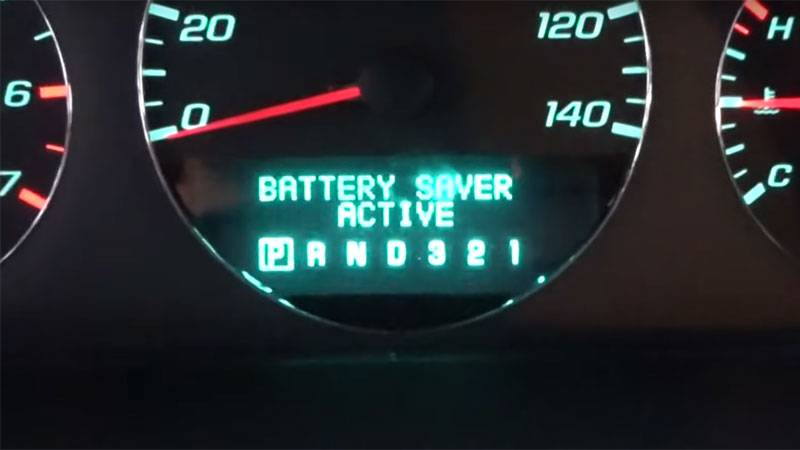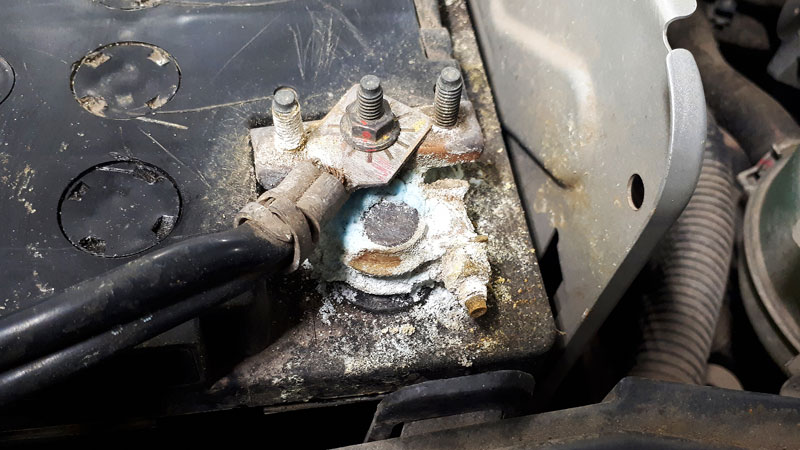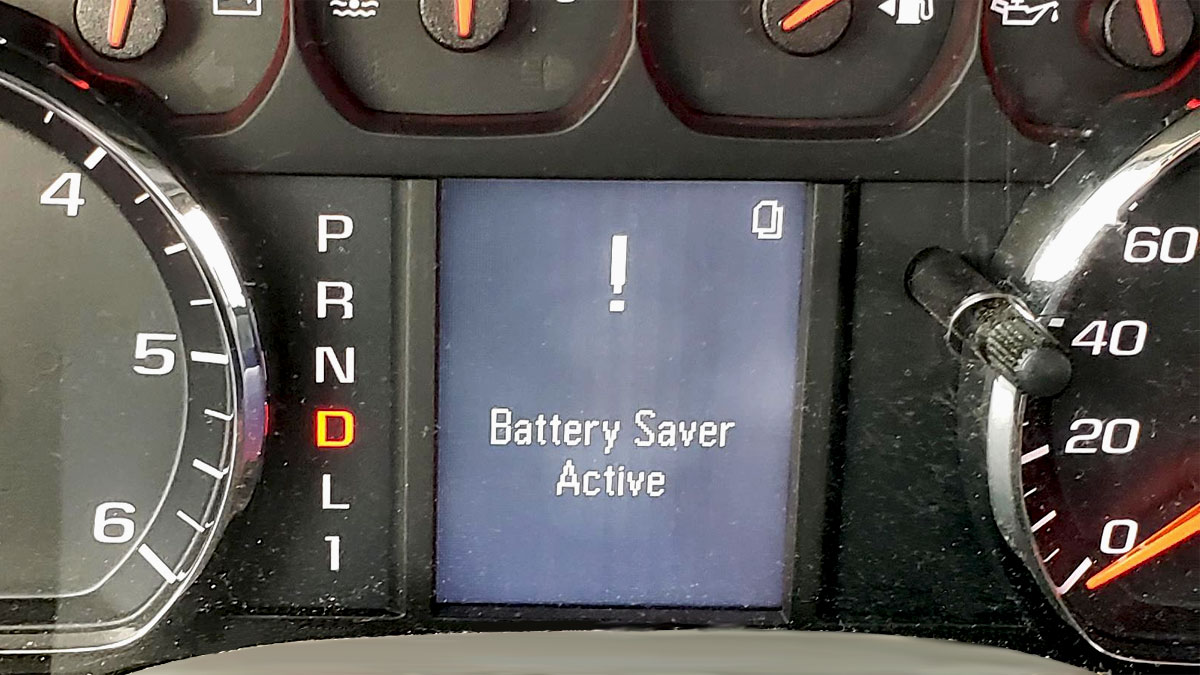Cruising down the highway, your car’s dashboard lights up with an unfamiliar warning: “Battery Saver Active.” While this alert often causes both confusion and concern, it’s often a simple fix.
But what exactly does this message mean, what caused it, and what should you do immediately after seeing this warning pop up?
What is “Battery Saver”?
“Battery Saver” is a mode where the computer shuts off peripheral electrical systems to prioritize the power you need to keep driving down the road. This occurs when either the battery or the alternator have an issue and the supplied voltage is low.
When you’re driving down the road, your alternator is the main source of power for your vehicle. If your alternator cannot keep up with the electrical demand of the vehicle, you may encounter a Battery Saver Active warning on your GM vehicle. GM makes include Buick, Chevrolet, Cadillac, and GMC.
This warning light is similar to the battery warning light seen on most vehicles. The battery warning light is more generic and not specific to General Motors.
“Battery Saver Active” Meaning

The Battery Saver Active warning means the charging system is either unable to charge the battery properly, or the electrical draw exceeds the alternator’s capacity. In both cases, Battery Saver mode will engage to prioritize the electrical needs of your vehicle’s operation.
In other words, Battery Saver mode allows you to continue driving as long as possible.
If you see a “Battery Saver Active” warning, you should proceed to a repair shop as soon as possible. You may even want to test the battery voltage at an auto parts store if you can’t get to a shop quickly enough.
Causes of Battery Saver Active Light
The Battery Saver system is caused by an electrical problem. The root cause is often the battery, alternator, or some connection in between.
1) Corroded Battery Terminals

A common cause of charging issues is corroded battery terminals. Check the battery cables where they attach to the battery. If you notice a brown, white, or green powder, you have corrosion or battery acid on the battery terminals.
Cleaning off this corrosion will give you a better connection to the battery and allow the charging system to work more efficiently. In extreme cases, the corrosion may prevent you from starting the vehicle.
2) Loose Battery Cables
Similar to corroded battery terminals, if your battery cables are loose you will have a poor connection to the battery. This will impact the alternator’s ability to charge, slowing the process. This can also make it difficult to start the vehicle.
3) Bad Battery

Lead acid batteries age with time and use. If you think your battery might be bad, you can test it with a multimeter. In extreme cases, a bad battery will prevent you from cranking the vehicle to start it. Once your battery goes completely flat, it may never return to full strength.
Sometimes a good car battery can appear to be bad if you have a parasitic draw. A parasitic draw is a constant drain on the battery when the vehicle should be off.
4) Bad Ground
A bad ground can act a lot like a bad battery or alternator. The negative terminal on most vehicles is a ground, but you will also have ground straps throughout the engine bay for various engine components.
When a ground goes bad, you may be left with an open circuit or a condition where a system works intermittently. Check for loose or missing ground connections while troubleshooting the Battery Saver Active warning light.
5) Bad Alternator
Alternators (also called generators) keep your vehicle running while you drive, and they also charge your battery while the vehicle is running. The alternator has a pulley that attaches to the serpentine belt. As this pulley spins, it generates electricity.
Bad alternators are less common than bad batteries and battery connection issues, but alternators do occasionally encounter issues. If you want to test for a bad alternator, consider using a multimeter to perform a voltage drop test.
6) Aftermarket Sound System

Although this is a less common cause of electrical issues, it is still worth mentioning. If you’ve added a high powered aftermarket sound system to your vehicle without upgrading your alternator, you may encounter a situation where your amplifier draws more power than the alternator can provide.
When upgrading your sound system, it’s a good idea to check your amp and your alternator’s specifications to make sure the two are compatible. Consider upgrading to a stronger alternator if you have a high powered amp or a large subwoofer.
Can I Drive With the Battery Saver Active Light On?
While it’s possible to drive for a brief time with this light illuminated, you shouldn’t drive longer than is absolutely necessary.
Electricity from either the battery or alternator is needed to power the ignition coils, which send an arc through the spark plugs. If you run out of power, your car will stop running and you will be stranded.
- “Battery Saver Active” Message (GM, Buick, Chevrolet, Cadillac, GMC) - June 27, 2024
- “Check Fuel Cap” Light On? (4 Causes and How to Turn Off) - June 21, 2024
- “Steering Assist is Reduced, Drive with Care” (Causes and How to Fix) - May 31, 2024

